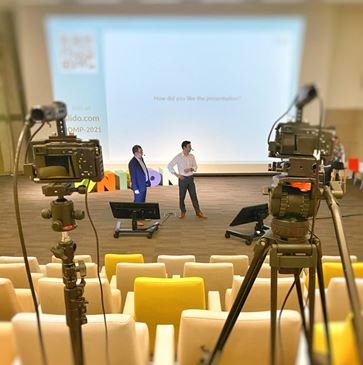Creating multimedia content that resonates with different audiences is both an art and a science. Whether you’re designing for kids, professionals, or any specific group, tailoring your content effectively can make all the difference. In this article, we’ll share insights on how to design multimedia content for different audiences, ensuring it meets their needs and expectations.
Understanding Your Audience
To design multimedia content for different audiences, you first need to understand who they are. Audience research helps you determine their preferences, interests, and needs. For instance, designing content for teenagers will differ significantly from creating content for seniors. By identifying key demographics such as age, profession, and interests, you can tailor your multimedia elements to suit their specific preferences.

Choosing the Right Medium
Different audiences engage with various types of media. For instance, younger audiences might prefer short, engaging videos or interactive content, while professionals might appreciate detailed infographics or podcasts. When designing multimedia content for different audiences, choose the medium that best suits their habits and preferences. This ensures that your content is both engaging and effective.
Crafting Relevant Messages
Once you understand your audience and choose the right medium, focus on crafting relevant messages. The tone, language, and content should resonate with the specific audience you’re targeting. For example, a fun, casual tone might work well for content aimed at a younger demographic, while a more formal and informative tone might be better suited for a professional audience. Tailoring your messages ensures that your content is relatable and impactful.
Designing Visual Elements
Visual elements play a crucial role in multimedia content. Colors, fonts, and images should align with your audience’s preferences. For younger audiences, vibrant colors and trendy designs might be appealing, whereas, for a more mature audience, subdued colors and classic designs might be more appropriate. When designing multimedia content for different audiences, always consider the visual aesthetics that will best engage and attract them.
Incorporating Interactivity
Interactive elements can enhance engagement and make your content more memorable. For instance, quizzes, polls, and interactive infographics can captivate audiences and encourage them to interact with your content. When designing multimedia content for different audiences, consider how interactive features can add value and enhance their experience. Ensure that these elements are easy to use and relevant to the content.
Ensuring Accessibility
Accessibility is a critical aspect of designing multimedia content. Make sure your content is accessible to people with various abilities. This includes using alt text for images, ensuring that videos have subtitles, and designing content that can be navigated easily. Accessibility should be a key consideration when creating multimedia content for different audiences to ensure that everyone can engage with it effectively.
Adapting to Different Platforms
Different audiences use various platforms to access multimedia content. For instance, younger audiences might be more active on social media platforms like Instagram and TikTok, while professionals might prefer LinkedIn or YouTube. When designing multimedia content for different audiences, adapt your content to fit the platform it will be viewed on. This includes optimizing formats, sizes, and styles to suit each platform’s requirements.
Testing and Feedback
Before finalizing your multimedia content, test it with a sample of your target audience. Gather feedback to see if the content resonates with them and meets their needs. Testing helps you identify any areas for improvement and ensures that your content is effective. Make necessary adjustments based on the feedback to enhance your content’s impact.
Staying Updated with Trends
Multimedia trends evolve quickly, and staying updated with the latest trends can help you create relevant content. Follow industry news, attend webinars, and engage with other professionals to stay informed about new developments. This will help you incorporate current trends into your multimedia content, making it more appealing and effective for your audience.
Analyzing Performance
After your multimedia content is published, analyze its performance using metrics such as engagement rates, views, and feedback. Understanding how your content performs will give you insights into what works and what doesn’t. Use this information to refine your approach and improve future multimedia content for different audiences.
Conclusion
Designing multimedia content for different audiences involves understanding their needs, choosing the right medium, and crafting relevant messages. By focusing on visual elements, interactivity, and accessibility, and adapting to different platforms, you can create engaging and effective content. Testing, staying updated with trends, and analyzing performance will further enhance your content creation process. Embrace these strategies to ensure your multimedia content resonates with your audience and achieves your goals.











